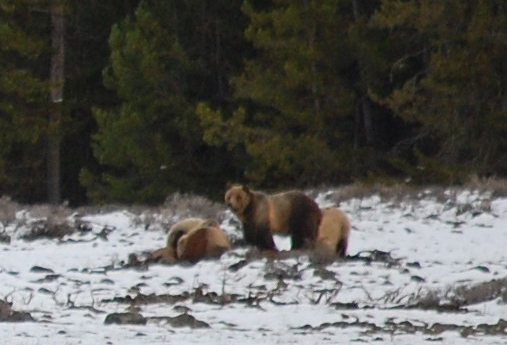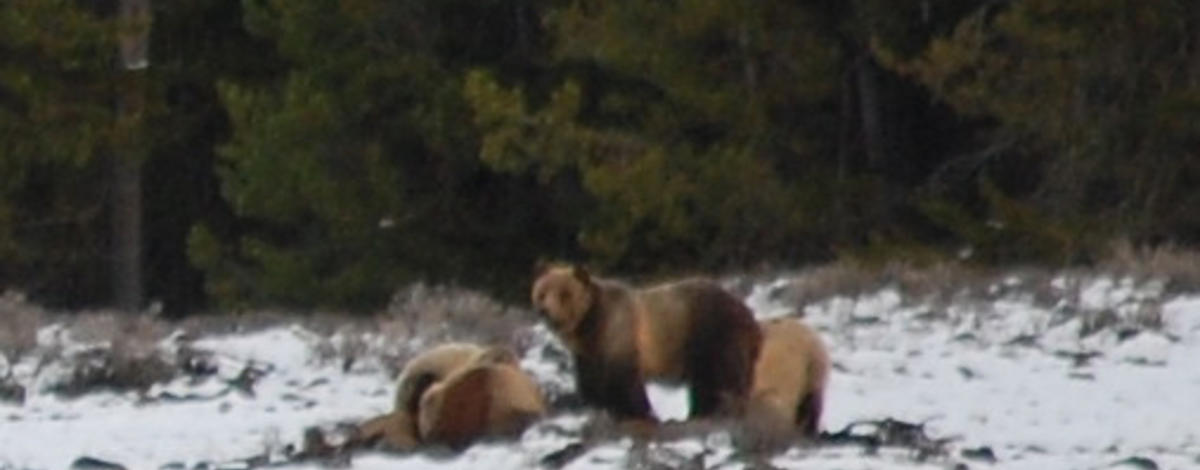
Grizzly Bears Are Out In Upper Snake Region
ISLAND PARK – Tracks in the backcountry are one thing, but eye-witness reports by motorists driving on Highway 20 in Island Park is an even surer indicator that grizzlies bears are emerging from their dens in the Upper Snake Region. Posts to the region’s FaceBook page on Friday, April 28 indicated that a group of grizzly bears was observed from Highway 20, near Harriman State Park. Analysis of images taken from cell phones indicates the bears observed were probably Bear 728, a sow with three large two-year-old yearlings. Examination of the site by department personnel found that the grizzlies were digging up pocket gophers caches.
Recent radio tracking flights had indicated that collared grizzly bears in the region had begun to emerge from their dens, this sighting confirmed that even at lower elevations bears were on the move looking for food. Grizzly bears tend to den at higher elevations so generally not many dens are located in the Upper Snake.
The Intermountain West has always been home to bears. Even in those times and places where humans worked to eliminate grizzly bears, black bears were generally allowed to exist. Today, grizzly bears with the help of man have met all criteria for recovery in the Yellowstone Ecosystem. This means that as both species of bears go about their routines to survive; an ever expanding human presence means that the opportunity for an encounter with a bear is possible. This closeness to wildness is why many people choose to live, work, and visit in the region.
Now is the time for those persons who are headed out into bear country to start carrying bear spray and remember to follow suggestions that will help reduce the chance of conflict with bears. Hunters and residents that observe images of grizzlies on trail cameras are encouraged to forward those images to the Idaho Department of Fish & Game (IDFG)or report sightings at http://tinyurl.com/cgbear
The price for this opportunity to experience nature firsthand means that humans need to be as educated about how bears live. Knowing what bears need to survive and what humans do that can cause conflicts is important to reducing the chance for problems. In the case of this sow and her young, it is encouraging to see them learning about natural food sources. According to IDFG Large Carnivore Biologist Jeremy Nicholson, “Mamma bears don’t let your babies grow up to be trash bears, don’t let ‘em seek bird feeders or BBQ grills, teach them to eat tubers and huckleberries and such.” (Nicholson is from the South, so imagine Willie Nelson singing this.)
Failure to respect bears or any animal can have negative outcomes for all parties involved. Like all animals, grizzly bears should be respected, but need not be feared. Part of understanding about how to react to bears is based on being able to tell the difference between the two species found in the region. The Idaho Department of Fish & Game has a section of its website devoted to learning how to tell the difference and can be accessed by anyone at http://tinyurl.com/bearID
For more information about being Bear Smart in bear country visit:www.igbconline.org
##

